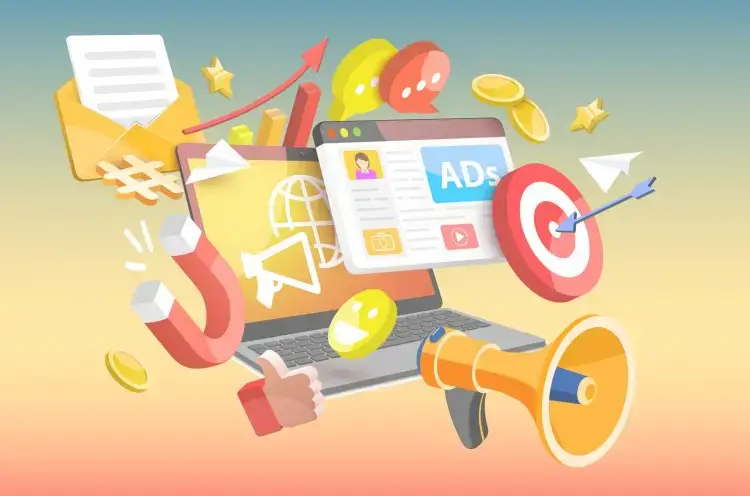

This shift is called sustainability in marketing, and it’s not just a buzzword. It’s a new way of building relationships, loyalty, and long-term success. Green brands are gaining traction faster than ever, and the secret to their success lies in aligning values with action.
In this article, we’ll explore what sustainability in marketing is, why it matters, how it works, and how green brands are using it to win hearts and market share.
Why Sustainability Matters More Than Ever
It’s no exaggeration to say that sustainability is shaping the future of business. Research shows that:
This isn’t just consumer preference—it’s consumer pressure. People now expect brands to step up. Companies that ignore sustainability risk are losing customers, talent, and even investors.
The message is clear: sustainability is no longer optional—it’s essential.
What Exactly Is Sustainability in Marketing?
At its core, sustainability in marketing means promoting your products, services, and brand in ways that are eco-conscious, ethical, and transparent. It’s not about adding a green label to packaging or running an Earth Day ad campaign—it’s about embedding sustainability into the DNA of your brand.
Core Principles of Green Marketing
When done right, sustainability in marketing builds trust, loyalty, and advocacy. When done wrong—through greenwashing—it destroys credibility.

How Green Brands Win: The Competitive Edge
1. Emotional Connection with Consumers
Buying becomes more than a transaction—it becomes a statement. Consumers feel proud to support brands that reflect their own values.
2. Differentiation in a Crowded Market
Sustainability becomes a unique selling point (USP). Instead of competing on price or features, green brands stand out on values.
3. Attracting Younger Generations
Millennials and Gen Z represent the largest consumer groups of the future. Brands that win their loyalty today build lasting customer bases.
4. Positive Public Relations
Green initiatives generate press coverage, influencer mentions, and word-of-mouth buzz. Consumers love to share stories of brands “doing good.”
5. Future-Proofing Business
Governments are enforcing stricter sustainability regulations. Brands that go green early won’t just comply—they’ll lead.
Famous Examples of Green Marketing Done Right
These brands show that sustainability isn’t just “nice to have.” It’s a driver of profitability and brand power.
Of course, embracing sustainability isn’t easy. Brands face several hurdles:
Despite these challenges, the long-term payoff—loyalty, trust, and growth—makes the effort worthwhile.
Real Case Study: Greenwashing Backfires
One of the most famous failures was Volkswagen’s “clean diesel” scandal. The company marketed its cars as environmentally friendly while secretly cheating emissions tests.
The fallout? Billions in fines, loss of consumer trust, and a tarnished reputation that still lingers.
The lesson: if you’re going to market sustainability, it has to be real.
Consumer Psychology: Why People Support Green Brands
In essence, green brands appeal not just to wallets but to hearts and minds.
Connecting Values to Offers
Here’s where the marketing magic happens: brands must link consumer values to tangible offers. For example, sustainable packaging isn’t just packaging—it’s a promise that every purchase supports the planet.
This concept stretches across industries. Even in areas outside of traditional “green” sectors, businesses adapt to align with consumer values. For instance, online gaming platforms constantly adjust their rewards and offers to appeal to what users care about. A clear example can be seen here: newzealandcasinos real money casino offers. Just as casinos evolve promotions to stay relevant to their audience, green brands must evolve their sustainability strategies to meet consumer expectations.
The principle is the same: deliver what people value most, and they’ll keep coming back.
1. Audit Your Brand Practices
Where are you now? Evaluate packaging, suppliers, energy use, and logistics.
2. Be Transparent About Progress
Show what you’re doing, even if you’re not perfect. Consumers reward honesty.
3. Highlight Eco Stories in Campaigns
Share how products are made, who makes them, and what impact purchases have.
4. Educate Customers
Provide guides, blogs, and social posts on how they can live more sustainably with your products.
5. Collaborate with Green Influencers
Eco-conscious creators can amplify your message and strengthen credibility.
6. Celebrate Small Wins
Every step counts—whether it’s reducing plastic by 20% or planting trees for every sale.
Digital Marketing and Sustainability
Sustainability isn’t just about products—it’s also about how you market them.
By aligning marketing methods with eco-friendly practices, brands prove that sustainability is more than a tagline—it’s a full-circle commitment.
The Future of Sustainable Marketing
Looking ahead, sustainability in marketing will only grow stronger. Expect to see:
Brands that innovate early will not just survive—they’ll thrive.
Final Thoughts: Why Green Brands Win
The world is shifting, and marketing is shifting with it. Green brands win because they:
Sustainability in marketing is not a campaign—it’s a commitment. It’s about building a brand that consumers trust, love, and advocate for.
The question isn’t whether to embrace sustainability. The real question is: when will you start?
Because in a marketplace where values matter as much as value, the greenest brands will always have the brightest spotlight.

This article is proudly brought to you by the Digital Frontier Hub, where we explore tomorrow’s business solutions and cutting-edge technologies. Through our in-depth resources and expert insights, we’re dedicated to helping businesses navigate the evolving digital landscape across New Zealand and beyond. Explore our latest posts and stay informed with the best in Artificial Intelligence, E-commerce, Cybersecurity, Digital Marketing & Analytics, Business Technology & Innovation, and Cloud Computing!